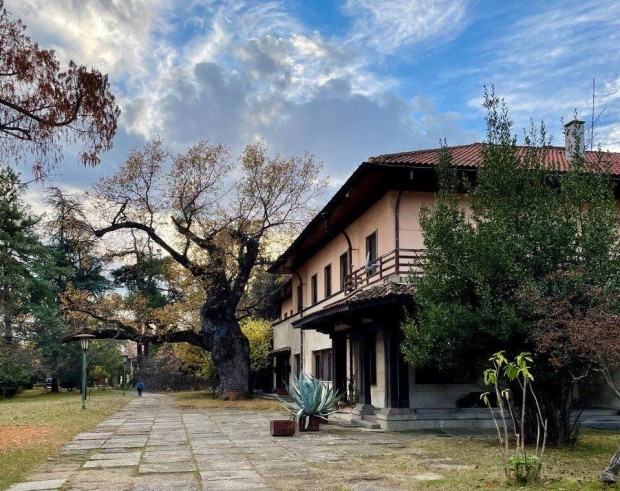Everything takes place in the “Krichim” palace, which is an out-of-town Bulgarian royal hunting lodge north-east of the village of Kurtovo Konare, Plovdiv region, west of the Vacha river, built according to the project of architect Georgi Fingov in 1905 for Prince Ferdinand and was completed to a design by architect Yordan Sevov under Tsar Boris III in 1936.
The history of the “Krichim” palace begins in the beginning of the 20th century, when Kostadin Baikushev drew the attention of Prince Ferdinand I to this forest in the Plovdiv region, a former property of the sultan, a remnant of the historical “Great Bulgarian Forest” (Magnae silvae Bulgarorum), which stretched from Plovdiv to Belgrade. The centuries-old oaks of Krichim koria, the long forest, which offer magnificent natural landscapes rich in flora and fauna, fascinated the prince who decided to create a hunting park. After purchasing surrounding farmland and bringing in deer and fallow deer, the farm was fenced off. In 1901, the state hunting farm “Krichim” was established.
In 1905, the first building was built – the hunting lodge “Austrian House” according to the project of architect Georgi Fingov. Regardless of the stucco architecture, the house is a modest functional structure corresponding to its purpose. in 1909 it was expanded by a After another 27 decades, sanded paths were built and native and varied vegetation planted, some of the existing secular oaks were used as the backbone of the park composition.
Initially, the park was managed by the Plovdiv gardener Iliya Mavrov. Subsequently, further vegetation was planted, the land was fenced in and fallow deer were imported. The gardeners initially formed a small park, which gradually grew to about 2000 acres.
Before abdicating in favor of his son Boris and going into exile, King Ferdinand stayed in the palace several times with his family. When he was prime minister, Alexander Stamboliyski also often stayed in the palace. Before Stamboliyski’s assassination in 1923, he had been warned and decided that the palace would be the place where he most likely could save himself. While en route, Alexander Stamboliyski was captured and later killed in his home village of Slavovitsa by VMRO members.
Over the years the palace has been inhabited not only by the royal family, but also by many dignitaries and delegations from various parts of the world. In the royal cabinet in 1943, Boris III rescinded Adolf Hitler’s order to deport Jews from Bulgaria. During Tsar Boris’ time, his children—the future Tsar Simeon II and his sister Princess Maria Luisa—grew up and played in the palace and park. A special tank was built for them, which can still be seen today among the centuries-old trees.
After 1946 the palace was nationalized and the complex became the residence of the party government. The then leading men and grandees of the party remained there: Valko Chervenkov, Todor Zhivkov, Pencho Kubadinski, Ludmila Zhivkova and others. For Valko Chervenkov, they even had to make and extend the queen’s bed, as it did not suit him. In 1957, Vietnamese President Ho Chi Minh also slept in the Krichim Palace. Among the guests of the palace were Fidel Castro, Yuri Gagarin, Joseph Tito, Indira Gandhi and even the sheikh of Iran. After 1989, our heads of state, such as Petar Stoyanov and Georgi Parvanov, senior government representatives and guests from abroad stayed here again. For a long time the building was managed by UBO/NSO and access was very limited.
There are 55 bedrooms, including 12 bathrooms. In the central dining room, together with the precious crystals and porcelain, the banquet table stands out, made with unique versatility and technology: from a pack for 4 people it can be made for 24 people. In the palace, right next to the rooms of the king and queen, are their offices, in which everything is still intact today. The salon with the king’s trophies is also interesting. Exquisite hygiene has been preserved to this day. There is also a cinema in the building, which is a landmark of the beginning of the last century. An illuminated staircase leads to the second floor, where Queen Joanna’s rooms were located. The study room of Simeon II and Maria Luisa was also restored, as were their bedrooms.
The entire decor of the palace was done in Vienna.


